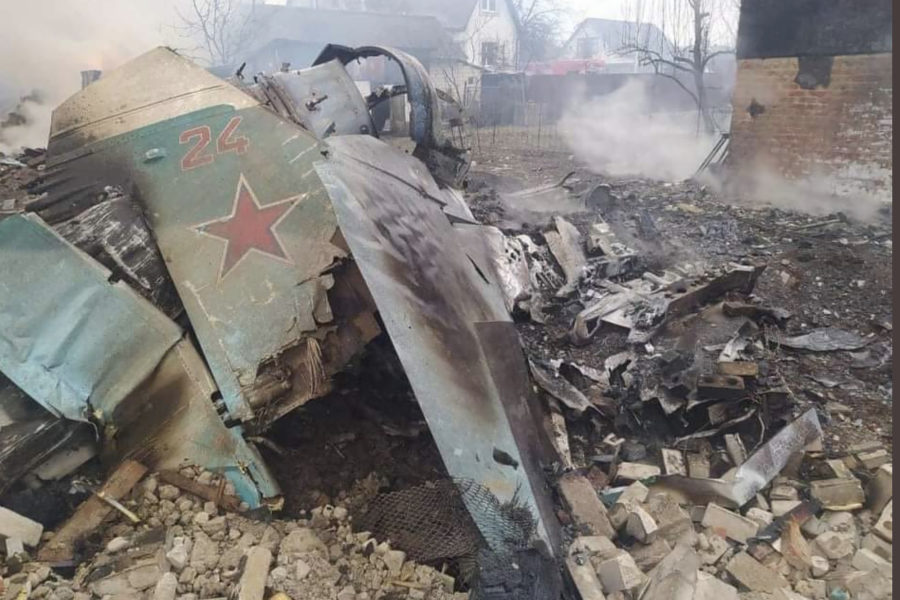Russia’s invasion of Ukraine has failed in its strategic objectives and led to tremendous loss of life, and a counteroffensive by Ukrainian troops is now routing Russian forces.
Russia’s failures are due to its ineffective use of air power, according to top U.S. Air Force generals. As a result, the Russians have not been able to control the skies.
Russia arrived in Ukrainian air space with non-stealth aircraft, and Ukrainian surface-to-air missiles have since taken out 55 Russian aircraft, the majority in the first few weeks of the war, said Gen. James B. Hecker, commander of U.S. Air Forces in Europe-Air Forces Africa, during AFA’s Air, Space & Cyber Conference on Sept. 19. Now a grinding war of attrition has led to about 80,000 Russian troops being killed or wounded, according to Department of Defense officials.
“That’s what you get if you don’t have air superiority,” Hecker said of Russia’s losses. “We, as Western countries, won’t stand for that. We won’t stand for those casualties. We need to make sure, as we move forward, that we’re able to gain and maintain air superiority.”
Russia’s bungled invasion showed the need for robust U.S. air power, said Hecker and others, echoing comments made by Air Force Chief of Staff Gen. Charles Q. Brown Jr.
To do that, the Air Force is developing programs such as Next Generation Air Dominance (NGAD) and the B-21 stealth bomber. Still, its inventories of fighters and bombers have declined for years. The U.S. currently fields 2,176 fighters and 113 bombers, according to AFA’s Mitchell Institute for Aerospace Studies. Just 20 percent of those aircraft are stealthy. The proposed fiscal 2023 Air Force budget would keep the service’s number of fifth-generation fighters flat, buying 33 F-35As while simultaneously cutting 33 F-22s. While Congress may alter the numbers, the service is facing a difficult choice of cutting now to plan for a future force.
Fewer aircraft means the Air Force will have to rely on allies, who are increasingly motivated by Russian and Chinese belligerence, to fill the gap and achieve control of the skies.
“It’s a difficult decision on quantity,” Hecker told reporters when quizzed on the Air Force’s inventory. “We’re even going to go down more. The cost of airplanes [has] gone up quite a bit. We now have a lot of allies and partners that have some of these aircraft. So can we depend on them a little bit more? The defense budget is pretty high. You can get more airplanes, but you’ve got to make it higher.”
Russian tactics such as indiscriminate missile attacks and unsupported infantry advances show moves that an expansionist power may resort to when its air force is missing in action.
“There was no integration between an air campaign in the way that Airmen think of it and ground maneuver,” said Lt. Gen. Alexus G. Grynkewich during a panel. For example, he pointed out that Russia’s Air Force began the invasion of Ukraine in the same way it operated against irregular forces in Syria, despite the vastly different nature of the conflicts.
“They took the wrong lessons from the last war,” Grynkewich said. “That’s the danger all of us face every time.”
While Ukraine fought off initial Russian sorties, it, too, has been unable to gain control of the skies in the months since. According to a rough estimate by Hecker, Ukraine still has 80 percent of its pre-invasion aircraft, but it must employ its aircraft diligently, as the Russians, using many of the same Soviet-era systems as Ukraine’s, make sorties risky. U.S.-provided HARM anti-radiation missiles have allowed the Ukrainian Air Force to maintain temporary, small-scale air superiority for missions such as close air support and to target critical objectives. The Russians have been relegated to firing long-range cruise missiles from bombers, Hecker said, and the U.S. offers “time sensitive” warnings about those strikes.
The war in Ukraine has made air power conspicuous in its absence. Generals argued that if the U.S. is to wage a successful military campaign while protecting the joint force, the Air Force must keep the tenet of air superiority at the forefront.
“It’s something that we have to master, something that we have to be able to do, so that we can make sure that we don’t have our Soldiers and our Marines die from enemy aircraft,” Hecker said. “A lot of times you’ll hear in the press, on some of the lessons learned about this war, [that] we need to bolster our Army. We need more weapons. We need more artillery and those kinds of things. To an extent, a lot of that’s true, but you can’t forget the fact that if you had air superiority, a lot of this war that you’re seeing right now wouldn’t be happening.”
